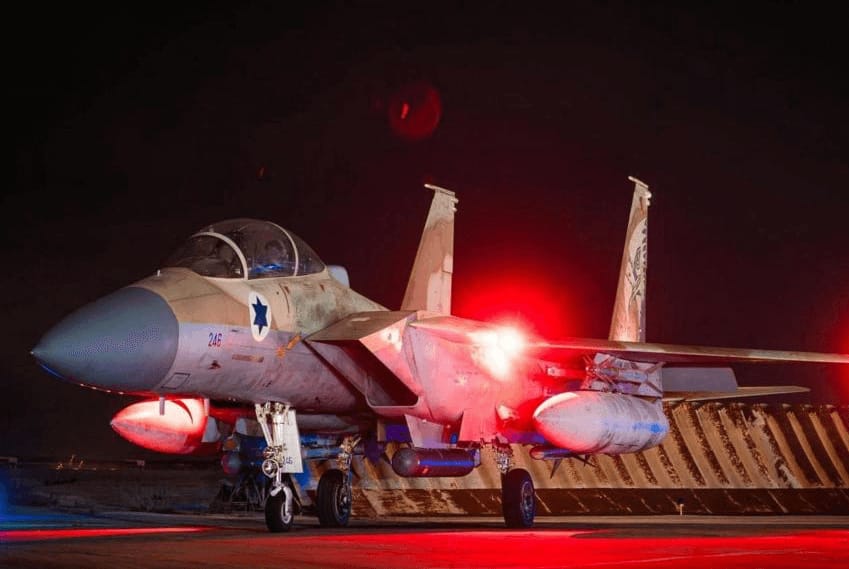- Israfan
- Posts
- IDF Marks One Year Since Israeli Strike on Iranian Air Defenses
IDF Marks One Year Since Israeli Strike on Iranian Air Defenses
The Israel Defense Forces remember the October 26 operation that shattered missile sites and expanded aerial freedom over Iran.

On the anniversary of a bold cross‑border campaign, the Israel Defense Forces issued a statement commemorating one year since an Israeli strike on Iranian air defenses that reshaped the regional balance. The October operation targeted ballistic‑missile launch sites, weapons factories and advanced surface‑to‑air systems objectives the IDF says were connected to efforts by Iran’s Revolutionary Guard Corps to threaten Israeli skies.
The events began weeks earlier, when Iran launched a massive salvo of roughly 180 ballistic missiles toward Israel on October 1, 2024. That assault marked Tehran’s second large‑scale direct strike of the year and set the stage for Israel’s measured but forceful response. In the pre‑dawn hours of October 26, more than 100 Israeli aircraft penetrated Iranian airspace in coordinated, precise strikes designed to neutralize key military infrastructure. The IDF’s public account describes the operation as an effort to dismantle missile manufacturing facilities and to degrade advanced air‑defense arrays that restricted Israel’s freedom of action.
Within Israel and among its partners, the operation is being framed as more than a single night of air raids. Officials highlight how the Israeli strike on Iranian air defenses created operational breathing room for subsequent missions and is credited with changing the calculus for later campaigns, including the joint Operation Rising Lion conducted months later with allied support. According to military statements, removing the most sophisticated surface‑to‑air capabilities expanded aerial freedom over Iranian airspace and allowed follow‑on operations to proceed with reduced risk.
Military analysts point to several layers of impact. First, taking out missile production lines and launch infrastructure was intended to reduce Tehran’s ability to mount concentrated missile barrages at short notice. Second, dismantling advanced air defenses reduces the protective envelope around high‑value targets, complicating Iran’s deterrence posture. Finally, the psychological and diplomatic message was unmistakable: Israel can project power when its national survival is threatened.
The IDF’s narrative emphasizes precision and restraint. Commanders involved in planning described the operation as carefully calibrated to hit military sites while limiting collateral damage. The targets were characterized as specific elements of Iran’s military industrial base tied to ballistic systems. Still, the mission carried major risks deep penetrations into hostile airspace, complex coordination of assets, and the possibility of escalation. That the campaign unfolded without a wider conventional exchange is cited by Israeli officials as evidence of effective planning and international management of the crisis.
Operation Rising Lion, which followed in June, is portrayed by Israeli sources as a further step in reducing Iran’s capabilities. That joint Israeli‑American action reportedly struck additional nuclear‑adjacent and IRGC infrastructure. Together with the October strikes, these operations form a throughline in Israel’s strategy to blunt threats and preserve deterrence. For policymakers, the combination of surgical strikes and diplomatic engagement is intended to keep Iran focused on caution rather than retaliation.
Public reaction in Israel to the anniversary was mixed but broadly supportive of measures framed as defensive. Many Israelis view the strikes as necessary responses to direct threats. Critics and some international observers, however, warn about the long‑term risks of military escalation and the potential for civilian harm in any cross‑border campaign. The balance between deterrence and de‑escalation remains the central policy challenge.
Veterans of the operation and current planners say lessons learned from the Israeli strike on Iranian air defenses will inform future contingency planning. Improving intelligence fusion, expanding stand‑off strike options, and refining electronic warfare packages are part of an evolving playbook. The message sent to adversaries, in this reading, is that Israel values operational surprise and precise effects to disrupt adversary capabilities while minimizing wider confrontation.
As the IDF marks the anniversary, it reiterates a commitment to defend the homeland and to act decisively when necessary. The memory of those nights aircraft over hostile territory, networks of sensors and command centers working in concert, and the calculated risks taken to remove threats remains vivid for military planners. For the Israeli public and its leaders, the operations are framed as a sober exercise of national defense: a clear warning that capabilities used to threaten Israel will be met with action.
In honoring this milestone the IDF underscores the strategic aim behind the strikes: to preserve Israel’s security and deter future large‑scale attacks. The anniversary is a reminder of the stakes at play and the lengths to which the nation will go to protect its people.
Israel stands for strength, security and the safety of its citizens. Please share this article or subscribe to our newsletter.